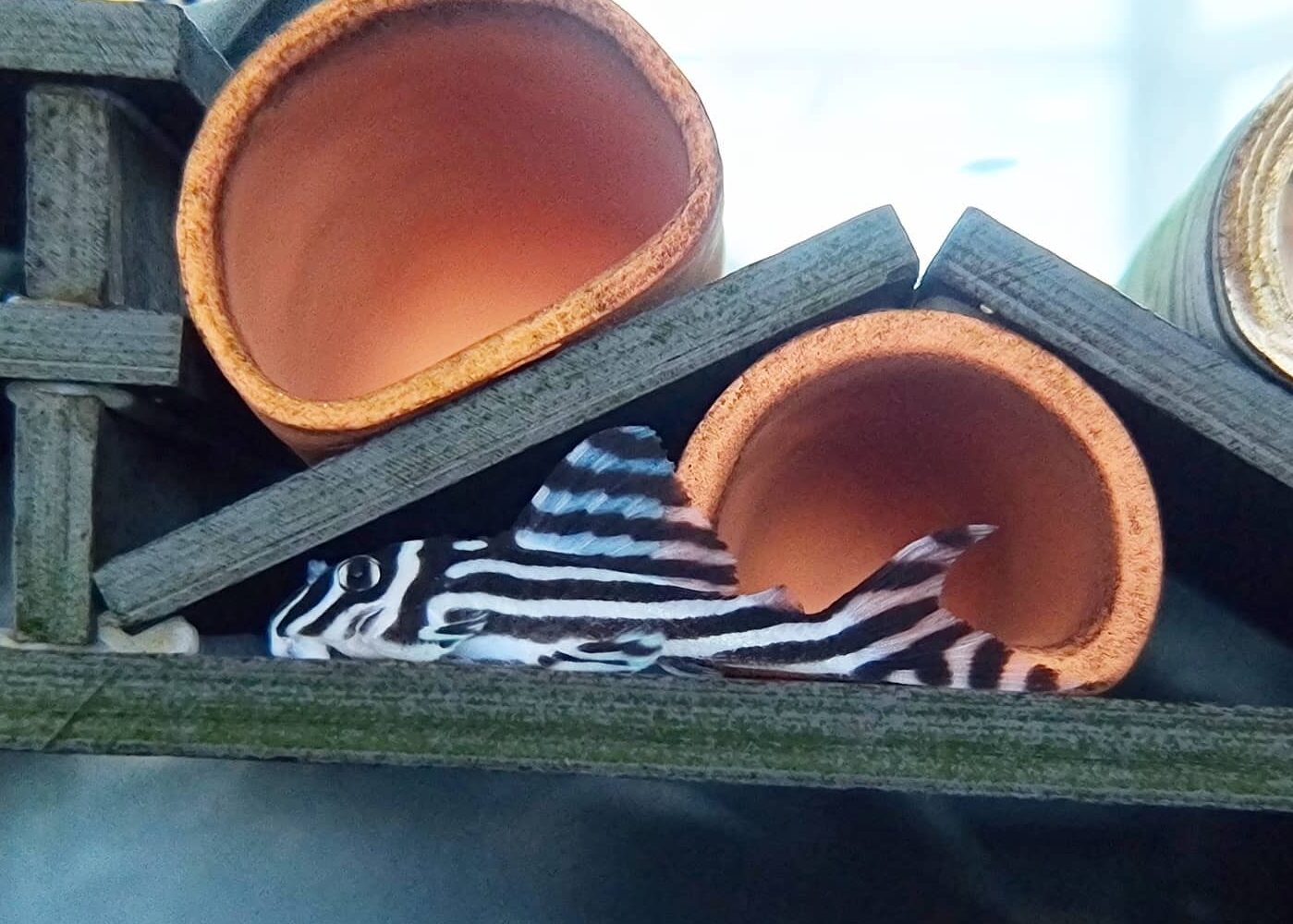Your basket is currently empty!
Breeding L46 zebra plecos, or Hypancistrus zebra, is rewarding yet challenging. These striking black and white striped fish are native to the Rio Xingu in Brazil and are highly sought after by aquarists for their beauty and rarity. Here’s a detailed guide to help you successfully breed L46 zebra plecos.
Understanding the Zebra Pleco
Before diving into the breeding process, it’s essential to understand the basic needs and characteristics of the L46 zebra pleco:
Size: They grow to about 3-4 inches in length.
Lifespan: They can live up to 10-15 years with proper care.
Diet: They are omnivorous and prefer protein-rich foods such as insect larvae, shrimp, and specially formulated pleco tablets.
Setting Up the Breeding Tank
A proper breeding setup is crucial for the success of breeding zebra plecos:
Tank Size and Environment: A minimum of 30 gallons is recommended for a breeding group.
Maintain a solid current to mimic their natural habitat. Use sand or fine gravel substrate and include plenty of hiding spots using caves, rocks, and driftwood.
Water Parameters:
Temperature: Keep the water temperature between 82-86°F (28-30°C). pH: Maintain a slightly acidic pH between 6.5-7.0.
Hardness: Keep the water soft, with a 2-6 dGH hardness level.
Filtration and Maintenance:
Use a high-quality canister filter to maintain pristine water conditions. Perform regular water changes (about 30-50% weekly) to keep the water clean.
Preparing the Breeding Group
Selecting Breeders: Aim for a group with a higher female-to-male ratio, ideally 2-3 females per male. Ensure the plecos are mature, typically around 2-3 years old.
Conditioning: To condition them for breeding, feed them a varied diet rich in protein. Include bloodworms, brine shrimp, and high-quality pleco pellets.
Encouraging Spawning
Simulating the Rainy Season: To simulate the rainy season, lower the water temperature by a few degrees and perform significant changes with cooler water. Increase the flow in the tank to mimic the increased currents during this period.
Providing Ideal Breeding Sites: Place multiple breeding caves in the tank. The caves should be just large enough for the male to fit snugly. Males will typically choose a cave and clean it in preparation for spawning.
The Spawning Process
Courtship: The male will entice a female into his cave by blocking the entrance and performing vibrating movements. Once inside, the female will lay eggs, which the male will fertilize.
Egg Care: The male will guard and fan the eggs to keep them oxygenated.
Depending on the water temperature, eggs will hatch in about 3-7 days.
Raising the Fry
Initial Care: Once the eggs hatch, the fry will feed on their yolk sacs for the first few days. After the yolk sacs are absorbed, feed the fry with newly hatched brine shrimp, finely crushed high-quality fry food, and specially formulated pleco wafers.
Growth and Development: Keep the tank clean with regular water changes and maintain stable water parameters. Provide plenty of hiding spots and a varied diet to promote healthy growth.
Troubleshooting Common Issues
Infertility: Ensure that both males and females are healthy and well-conditioned for breeding. Please verify that the water conditions are optimal and that their natural environment is closely mimicked.
Egg Fungus: Maintain excellent water quality to prevent fungal infections. Remove any unfertilized eggs promptly to prevent fungus from spreading.
Parental Care Issues: Some males might eat the eggs if they are stressed or feel threatened. Ensure the breeding tank is in a quiet, low-stress environment.
Breeding L46 zebra plecos can be a challenging but advantageous process. You can successfully breed and raise these stunning fish by providing the right environment, conditioning the breeders, and closely monitoring the breeding and rearing process. For all your zebra pleco needs, including breeding supplies and expert advice, visit Only Fins Stafford. Happy breeding!


Leave a Reply